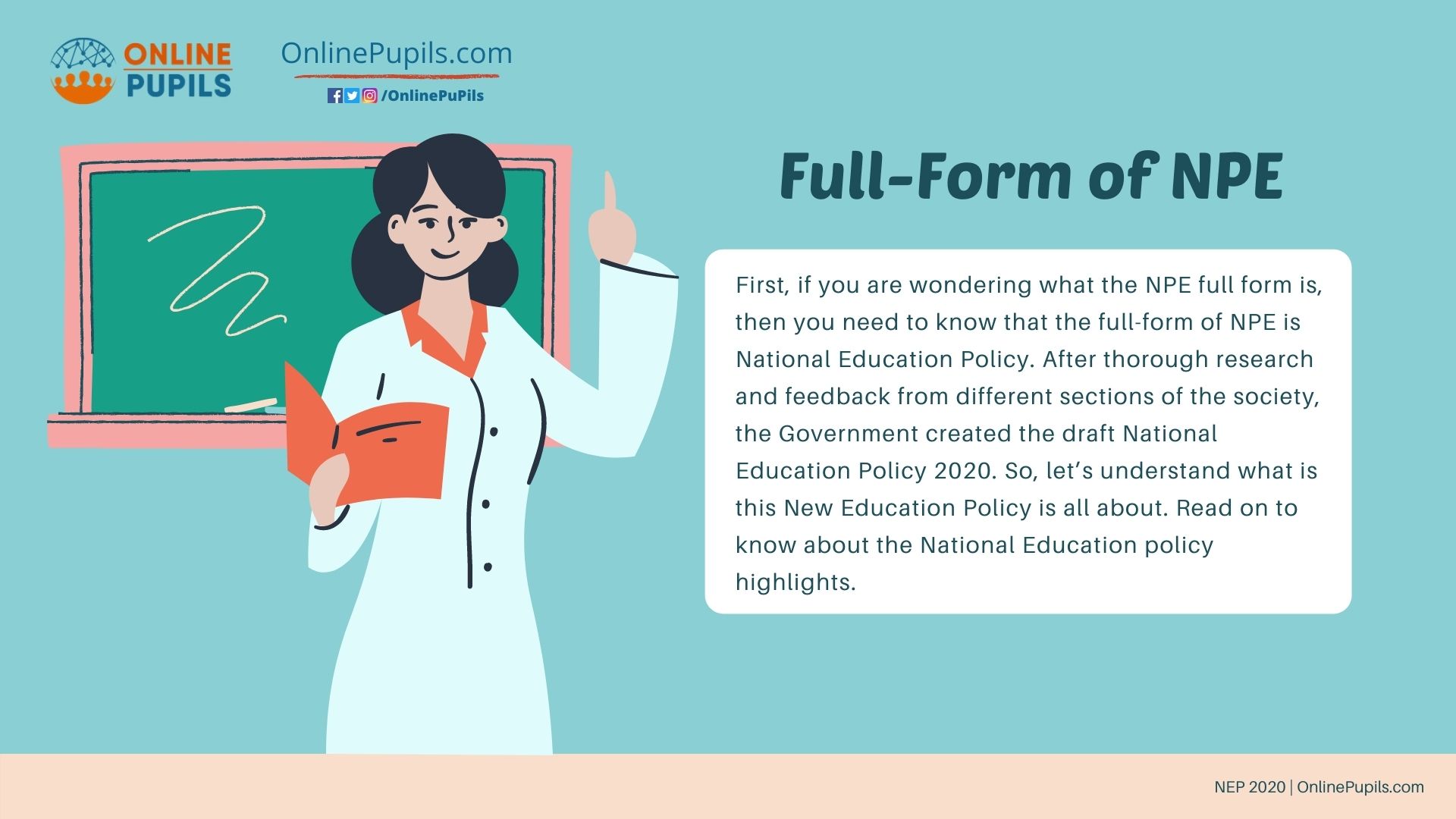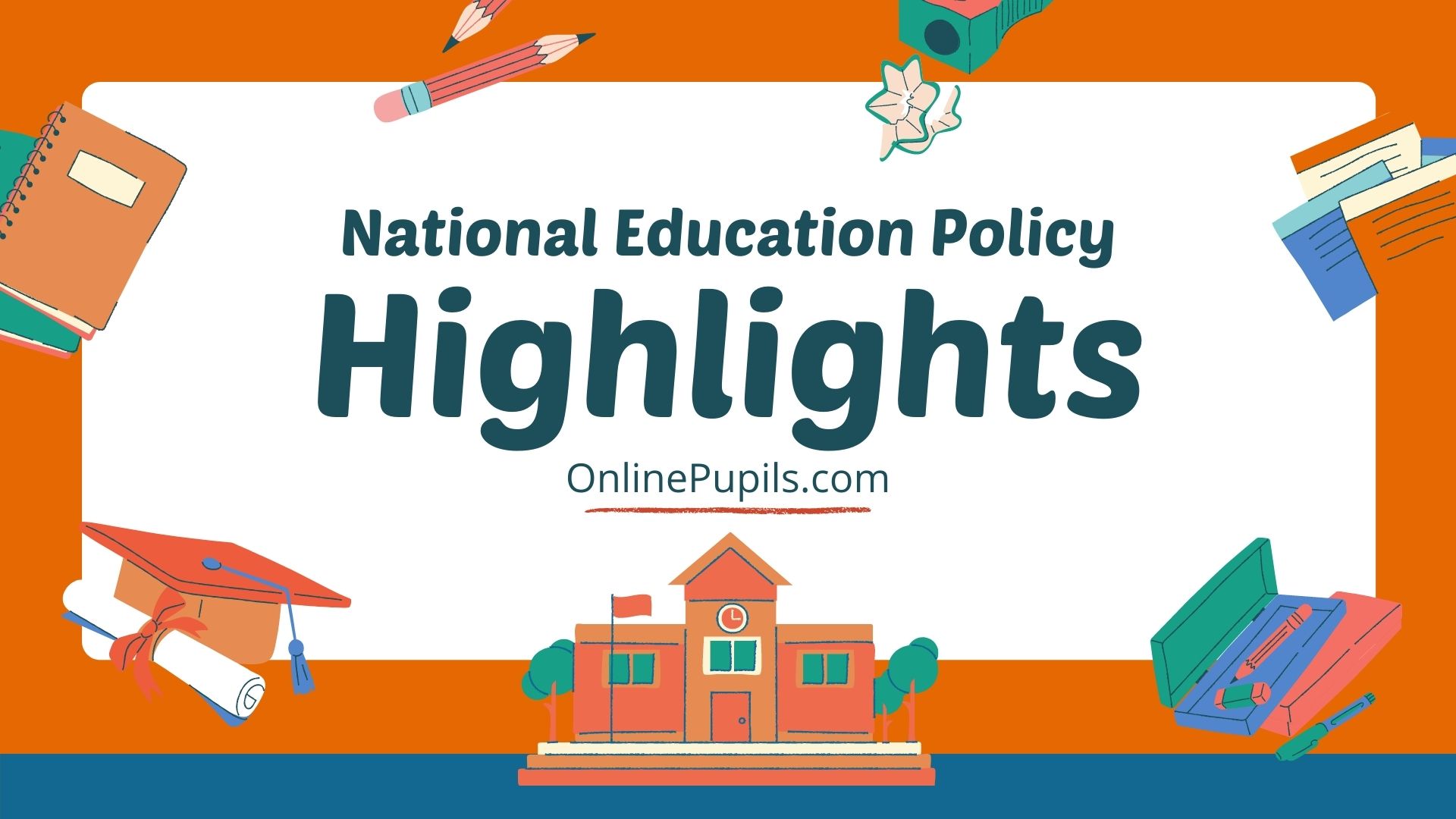There is a lot of discussions which is happening over the National Education Policy 2020. There is a lot of curiosity too over the Nai Shiksha Niti 2020. Let’s discuss the key aspects and features of the new education policy 2020. Both the students and teachers need to know about the Nai shisha Niti as it will impact the Indian education system.
What is the Full-Form of NPE?
First, if you are wondering what the NPE full form is, then you need to know that the full-form of NEP is National Education Policy. After thorough research and feedback from different sections of the society, the Government created the draft National Education Policy 2020. So, let’s understand what is this New Education Policy is all about. Read on to know about the National Education policy highlights.

Guiding Document of the National Policy on Education
The Nai Shiksha Niti, or known as NEP, is the National Education Policy is a document that will lay a strong foundation of a new education system in India. The NEP will act as a reference guide for educational institutions and the teachers. It reflects the Government’s priorities and concerns for the education system in the country and the educational causes.
Main Aspects of the new education policy 2020
School Curriculum NEP:
- According to the new education policy, the National Council for Teacher Education (NCTE) will formulate the National Curriculum Framework for Teacher Education (NCFTE)- 2021, in consultation with the National Council of Educational Research and Training (NCERT).
- There will be a 5+3+3+4 system instead of the prevailing 10+2 system. This system is based on the children’s cognitive stage, which will correspond to the ages 3-8, 8-11, 11-14, and 14-18 years respectively.
- It will focus on bringing the age group 3-6 years in the school curriculum as this age is recognized as a vital stage for a child’s mental development.
- The Board Exams would be made easier and focus on testing the students’ core competencies rather than evaluating the ability to retain the memorised facts.
- There would be no hard-core separation among the academic, vocational, and extra-curricular activities.
- The Assessment will now focus on the 360-degree holistic Progress card, and it will evaluate the student’s achievement for’ learning outcomes rather than memorized facts.
- The new education policy 2020 proposes that Vocational Education will start from Class 6, and students will get internships.
- Teaching in mother language/Mother tongue is provided up to Grade 5. However, there will be no imposition of a particular language.
- An independent authority will be set up that will govern both the public and the private schools.
Higher Education NEP:
- 3.5 crore additional seats will be added to the higher educational institutions.
- The Government aims to increase the Gross Educational ratio by 50% by 2035.
- Multiple Exits and Entry at degree level in the university exam: this would be beneficial for students who opt-out of the degree program for various reasons. If a student does not complete the full- course, the college/ university will award certificate and diplomas accordingly.
- Abolition of MPhil- The national education policy has abolished M.Phil. Now students can pursue Ph.D. immediately after four years bachelor’s degree.
- Undergraduate courses, Post-graduate courses, and Ph.D. level courses will now become interdisciplinary.
- The Government will create the Academic Bank of Credits, where students’ scores can be accessed and will facilitate Transfer of Credits.
- The National Education Policy also states that the Government will set up Multidisciplinary Education and Research Universities (MERUs). These universities will be at par with IITs and IIMs. These institutes will provide high-global standards of multidisciplinary Education in the country.
- The Government will create a stage-wise mechanism to grant graded autonomy to the colleges.
- The time-period of affiliation of the colleges will be 15 years.
- The Government will set up the Higher Education Commission of India –(HECI) for managing higher Education ( excluding legal and medical Education.
- According to the National Education Policy, now there will be no multiple regulatory bodies. Soon there will be only four bodies that will work towards regulation, and the HECI will manage them. They are namely:
- National Higher Education Regulatory Council (NHERC) will be set up (for regulation purpose),
- Higher Education Grants Council (HEGC)( for funding),
- General Education Council (GEC) (for standard-setting),
- National Accreditation Council (NAC) (for accreditation).

Additional Changes announced in the National Educational policy 2020
- Parakh- National Assessment Centre will be set up to assess the students.
- The NEP aims to increase the use of Technology in the sphere of Education. For this purpose, the Government will set up an autonomous body- National Educational Technology Forum (NETF).
- The NETF will increase the use of Technology to improve learning and enhance the assessment process, planning, and administration.
- The New Education Policy aims at setting up the National Institute for Pali, Persian, and Prakrit.
- To boost the research culture, the Government will set up the National Research Foundation. The Government will also establish the Indian Institute of Translation and Interpretation.
- The Nai Shiksha Niti also aims at setting up Gender Inclusion Fund and special Education Zones to provide the benefits to the underprivileged groups.
New Measures for Increased Investment in Education
- The National Education Policy proposes that the Government will increase the Public Investment in the Education sector to 6 % of the GDP as opposed to the current 4.6%.
- The Government will encourage foreign universities to set up campuses in the country.
Conclusion: the National Education Policy is a far more progressive policy than the National Education Policy 1986. It aims to address every student’s educational needs and provide them a holistic educational environment to thrive and compete globally. If the Government implements the National Education Policy, as stated in the documents, the day is not far when the Indian Students will become global students and progress considerably.

If you want to know about the National Education Policy, you can refer to our previous blogs. Watch out this space for more informative content on Education, CET- Common Eligibility Test, Digital Marketing, and Career-oriented news, and much more. You can also read about in detail the Impact of Coronavirus on Education: The Pros and Cons.

Leave a Reply